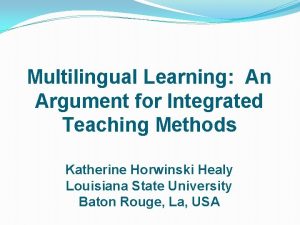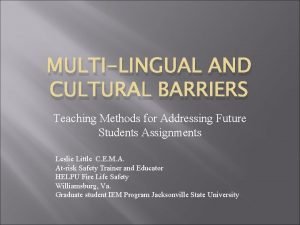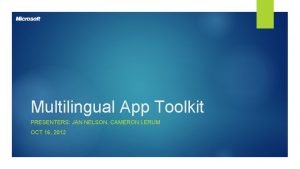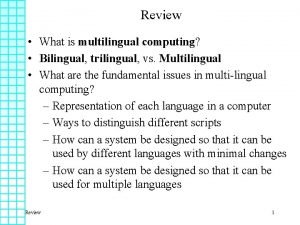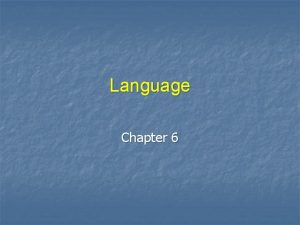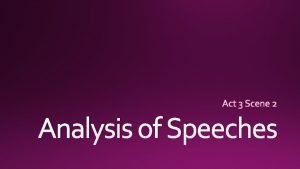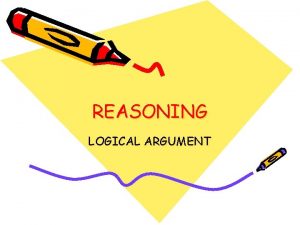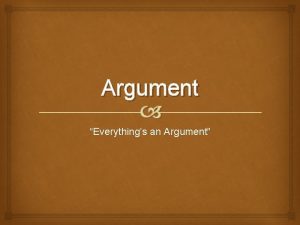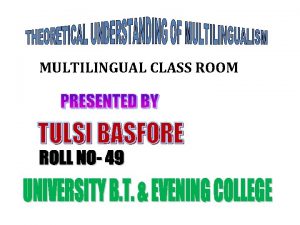Multilingual Learning An Argument for Integrated Teaching Methods










- Slides: 10

Multilingual Learning: An Argument for Integrated Teaching Methods Katherine Horwinski Healy Louisiana State University Baton Rouge, La, USA

Multilingual Acquisition �Many people are learning two or three foreign languages simultaneously �Educational systems �EU’s policies �Conferences on Multilingualism and Third Language Acquisition �International Association of Multilingualism

Problems with teaching languages separately �False ideas about keeping them separate �Trouble seeing similarities between languages �Trouble code-switching �Have to develop own learning strategies �Inconsistent teaching methods and terminology �Stereotypes reflected in teaching

Multilingual Learner Profile �Develop operational metalinguistic awareness �Develop own language learning strategies �Tend towards autonomous language learning

Examples from 2 projects �Luxembourg Interviews � 7 multilingual learners �Follyglot Questionnaires � 9 multilingual learners �All in non-integrated systems

Strategies of Multilinguals: Learning How to Learn �Beyond personal preferences such as realist vs. perfectionist, timid vs. extrovert, auditory vs. visual �borrowing, ‘foreignizing’, code-switching, making interlingual comparisons, developing specific study habits, organizing the study of each language in a set way or order (least to most competent or visa versa, easiest to hardest or visa versa, etc. ), avoidance of L 1 or other FLs, risk taking – using the language

Therefore … It would be much more effective to teach the languages in conjunction with each other, providing the tools to develop and systematize these strategies. How …?

Integrated Teaching �Use FL as medium of instruction for another subject (Math, History, etc. ) ‘dual-focused education’ �Use a single coherent system for all FL teaching �‘full’ or ‘complete integration’ The exciting news – THEY ALL WORK!

Full Integration �Pros: it’s effective! �Cons: difficult to institute at a national level due to �materials �teacher qualifications �differing needs and uses for each language �varying levels of competence in learners, etc.

Conclusion �Integration and coordination of language teaching efforts improves the learning experience. �Autonomy and learning skills can be made explicit and incorporated into the learning environment. �Further projects on a larger scale would be profitable.
